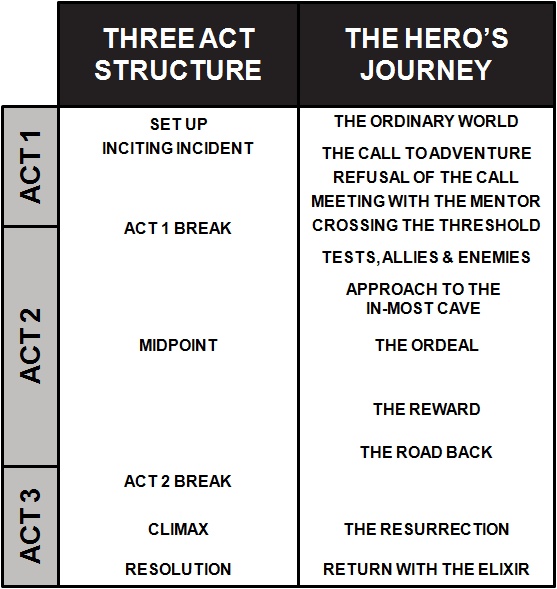The Hero’s Journey (aka classic plot, archplot structure, etc) is popular yet also complicated. Everyone has a slightly different idea on what each part should be. There are general ideas, sure, and the specifics differ.
“[Archplot is a goal-oriented plot where] for better or worse, an event throws a character’s life out of balance, arousing in him the conscious and/or unconscious desire for that which he feels will restore balance, launching him on a Quest for his Object of Desire against forces of antagonism (inner, personal, extrapersonal). He may or may not achieve it.” – McKee
Billy Wilder has a really simplified view:
- Act I: put the character up in a tree
- Act II: set the tree on fire
- Act III: get your character down
—
I’ll start with Christopher Vogler’s take.
The general plot:
Act I – The Ordinary World (beginning: 25%)
- Ordinary world
- Call to adventure
- Refusal
- Meet the mentor
- Crossing the threshold (transition to act 2)
Act II – The Special World (middle: 50% of the story)
- Tests, allies, enemies
- Approach to Inmost cave
- Ordeal (midpoint)
- Reward – “seizing the sword”
- The road back (transition to act 3)
Act III – The Ordinary World (end: 25%)
- Resurrection
- Return with the elixir
The general character arc:
Act I – The Ordinary World
- Limited awareness
- Increased awareness
- Reluctance to change
- Overcoming
- Committing (transition to act 2)
Act II – The Other World
- Experimenting
- Preparing
- Big change (midpoint)
- Consequences
- Rededication (transition to act 3)
Act III – The Ordinary World
- Final attempt
- Mastery
And here’s a random semi-related chart I found somewhere a long time ago.
